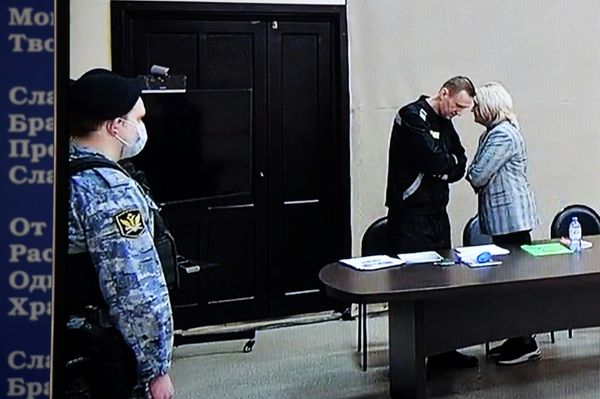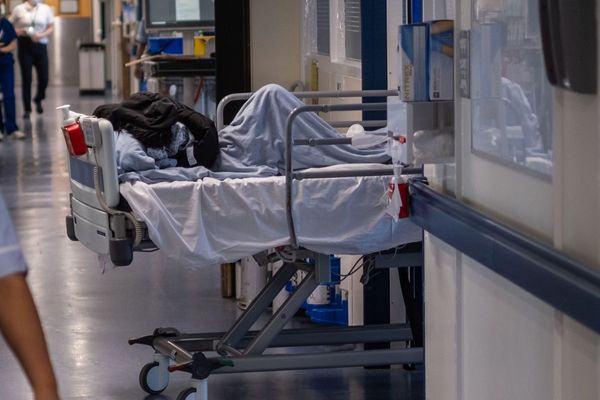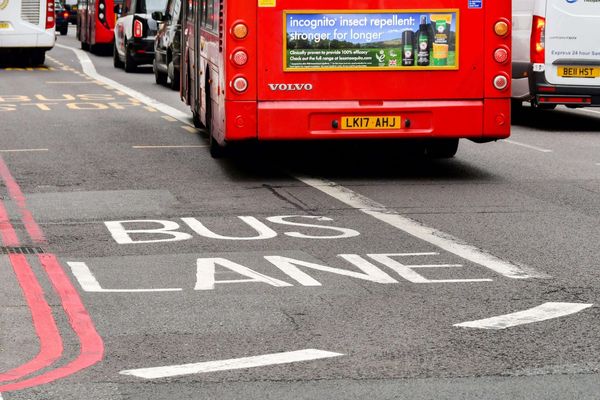PHILADELPHIA — Nine thousand people in Pennsylvania have died of COVID-19 since Dec. 1, making it one of the states hardest hit in deaths per capita in the omicron surge.
The surge reached a peak about as fatal as the coronavirus' initial spring 2020 wave in Pennsylvania. More than 100 deaths were reported per day for a month and a half. The death rate has been declining since Jan. 27, easing pressure on strained hospitals, but the state was still averaging more than 90 deaths a day Tuesday.
The variant was less likely to cause severe cases and death than previous COVID-19 strains. But because so many more people were infected by the highly transmissible variant, the total number of deaths was still very high — most of them among people who weren't vaccinated.
"It is a fallacy for folks to think that omicron was not deadly," said Timothy Friel, chair of the department of medicine at Lehigh Valley Health Network. "If you look across the region and across the country, omicron has been one of the most deadly waves we've seen."
Counties in the Philadelphia region, which are among the most vaccinated in the state, logged some of the commonwealth's lowest numbers in terms of deaths per capita during the surge.
Pennsylvania was one of the states hit hardest: The number of reported deaths per capita since Dec. 1 is fourth-highest in the nation, according to a Philadelphia Inquirer analysis of New York Times data.
The toll in Pennsylvania and nationwide amid the omicron surge reveals the devastation of the wave and the threat of the variant for those who are unvaccinated.
And it again underscores the wave's split-screen reality: Families were being devastated and hospital workers were emotionally and physically exhausted, while some in the broader community pushed the idea that a less serious variant meant society could now live with the pandemic.
That is a debate that goes on as the omicron surge relents: A growing chorus of government and public health leaders is citing rapidly declining case counts as a reason to drop mask requirements, while other health officials say it's too early to relax precautions and the CDC is still reviewing its masking guidelines.
In the small town of Bedford, the seat of hard-hit Bedford County, people could see it was "getting bad" but didn't necessarily change their approach to the pandemic, said Keenan Fink, funeral director at Timothy A. Berkebile Funeral Home.
"People are set in their ways. We have a group of people who believe in getting a vaccine and wearing a mask," Fink said. "We have a large group of people (for whom) that is not on their agenda."
The United States has averaged more than 2,000 deaths a day for the last four weeks; at the start of February, the surge peaked higher than spring 2020 but didn't reach the heights of the 2020-21 winter wave, according to The New York Times data.
In New Jersey, where the case surge reached similar heights but was shorter than in Pennsylvania, more than 3,800 people have died since Dec. 1. The death rate peaked lower than in Pennsylvania, just exceeding New Jersey's January 2021 peak, but was far below that of the state's devastating spring 2020 surge.
From Dec. 1 to Feb. 15, New Jersey saw a rate of 44 deaths per 100,000 residents, ranking 24th among states and hewing close to the national rate of 43. Pennsylvania's was 69 deaths per 100,000 residents.
As of Tuesday, 9,003 coronavirus-related deaths had been recorded in Pennsylvania since Dec. 1, according to CDC data.
Pennsylvania counts all deaths in which COVID-19 was determined to be the underlying cause or a significant contributing factor, as well as probable or presumed deaths of symptomatic patients who didn't have PCR test results. Pennsylvania Department of Health spokesperson Mark O'Neill said that means the state's high death-per-capita ranking could "be misleading, because states do not follow the same uniform standard for reporting deaths."
Bedford, Potter, Cameron, Fulton, and Franklin Counties had some of the state's highest deaths per capita during the surge, and in all except Cameron, less than half of residents are fully vaccinated with two shots of Moderna or Pfizer or one shot of Johnson & Johnson. In Fulton, Potter, and Bedford, less than 40% have been fully vaccinated.
"It's been a tragedy," said Kevin J. Dusenbury Sr., Potter County coroner and owner of Virgil L. Howard Funeral Home in Shinglehouse. "It's just been so sad."
The seven-day average peaked at 26 deaths a day in the Philadelphia suburbs and 19 in Philadelphia, according to an Inquirer data analysis.
"We continue to see a steady and encouraging decline in patients with COVID seeking care," said PJ Brennan, chief medical officer for the University of Pennsylvania Health System, noting that the number of virus-related emergency-room visits is down to "pre-surge levels" and hospitalizations have fallen by more than 80%.
Patterns that emerged in Pennsylvania hospitals track with national findings about who was most commonly killed by omicron.
In addition to deaths occurring mostly among unvaccinated people, deaths skewed slightly older than they were during the delta surge this fall, with most omicron deaths in people over age 75, according to a Washington Post review of federal data published last week.
At University of Pittsburgh Medical Center hospitals, for instance, the median age of death was 74 in the omicron surge, compared with 68 in the delta surge, officials said. And at Geisinger Health in east-central Pennsylvania, 414 of the 495 COVID-19 patients who died in the surge were not vaccinated, and it was more common for people whose immune protection had waned without a booster to die than people whose vaccines were up-to-date.
"It still is very, very rare to see someone under 65, fully vaccinated, who doesn't have other complicating features go on to death," said UPMC chief medical officer Donald Yealy. "If you are unvaccinated ... you really are playing roulette."
Deaths have devastated families and contributed to the emotional toll on health care workers.
"We have people with young children who have died," said Geisinger chief medical officer Gerald Maloney. "We have people that were the primary caregiver for an older person who died. We have people who were in the prime of life, really, with just so much promise, who died. Not only is the person who died the victim, but all the people that they loved and all the people that loved them are victims as well."







